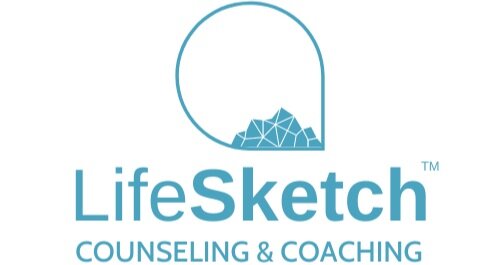The Work/Life Balance Myth: 3 Tips For Managing Work and Life With Burnout
Work/Life balance. It’s a buzzword we hear everywhere, especially in the hustle culture of modern life. But what does it actually mean? More importantly, are we getting it wrong?
Too often, people think of work and life as two competing forces—opposite ends of a scale in constant battle for our time, energy, and attention. The result? We feel like we’re constantly choosing one over the other, leading to guilt, stress, and burnout. We start to resent our jobs, feeling like they steal our personal time, and then we feel guilty when work creeps into family life or personal relaxation. Sound familiar?
Here’s the truth: Work/Life Balance isn’t about keeping work and life separate or perfectly balanced like a fulcrum scale.
When we view it this way, we set ourselves up for failure, because we’re not machines, and life isn’t predictable. Both work and personal life demand our attention, sometimes more than we plan for. That’s why it’s more helpful to think of work/life balance as something dynamic—a harmonious relationship where both can thrive together, feeding into each other rather than fighting for space.
Think of it more like a dance—a rhythm where both your work and personal life flow together, creating something sustainable and fulfilling. It’s not about splitting time perfectly down the middle but about integration and making intentional decisions that lead to a more satisfying life.
In this article, we’ll dive into what work/life balance really looks like, how to redefine it for yourself, and some key strategies to help you maintain that harmony, especially if you’re managing ADHD.
The Myth of Work/Life Balance: Opposing Forces
The Problem with Work/Life Balance: Why the Old Approach Fails
The old idea of work/life balance treats your work and personal life like two opposing forces: work on one side, life on the other. It’s all about making sure neither tips the scale too much, trying to keep everything in perfect equilibrium. But this leads to a lot of problems:
Stress: Trying to keep things perfectly balanced is exhausting. Life is unpredictable, and this mindset makes you feel like you're failing if the balance tips in one direction or the other.
Guilt: When you’re at work, you feel guilty about not being with family. When you're with family, you're stressed about work piling up. You never feel fully present.
Burnout: Balancing the demands of work and personal life in this way often leads to burnout. There’s no room for fluidity or flexibility, and that’s just not how life works.
The truth is, work and personal life are both integral parts of who you are, and they shouldn’t be in conflict. Instead of viewing them as separate realms, let’s look at how they can work together in an interconnected ecosystem.
A New Approach: Work/Life Harmony
When you think about work/life balance as finding harmony, it shifts everything. You’re no longer aiming for perfection, but for flow—creating a rhythm where both your work and personal life feed into each other.
Work and Life Are Not Opponents, They’re Allies
Your career provides structure, financial security, and a sense of purpose. It can be fulfilling and give you confidence. But too often, we think of it as an obligation.
Your personal life is where your mental and emotional well-being is nurtured. Time spent with family, friends, or on hobbies recharges you, helps reduce stress, and makes you happier. It’s also where we find meaning outside of professional success.
When we stop viewing these two areas of our lives as opposites and start seeing them as interdependent parts of our identity, the goal becomes clear: balance isn’t a static division of time, but a dynamic relationship that’s unique to you.
Three Essential Tips for Creating Work/Life Harmony
So how do we make this shift from juggling tasks and commitments to fostering an ecosystem where both work and life can thrive? Here are three key strategies to help you create work/life harmony:
1. Be Fully Present in Every Role
This is perhaps the most important element of achieving harmony between work and personal life. Being present means that when you're at work, you’re fully focused on work. When you're with family, you’re truly there, not mentally juggling tasks or thinking about your to-do list.
Why it’s important:
When you try to mentally multitask between roles, you're only giving half your attention to both. This leads to inefficiency at work and missed opportunities for meaningful connection in your personal life.
Being present reduces feelings of guilt. You know you’re giving each area of your life the attention it deserves at the right time.
How to do it:
Time-block your day. Organize your schedule into dedicated blocks for work and personal activities. When you’re at work, fully commit to your tasks. When you're at home or engaging in personal activities, leave work behind.
Technology boundaries. Set up systems to help you unplug during personal time—turn off notifications, set out-of-office replies, and communicate your boundaries to colleagues.
Personal anecdote: After our first child was born, I took 7 weeks off, completely unplugging from work. When our second was born, I only took 7 days off, but it still worked for our family because I made sure that when I was home, I was fully present.
2. Prioritize the Big Rocks
Stephen Covey’s "Big Rocks" metaphor is perfect for creating work/life harmony. In short, the “big rocks” are your non-negotiables—the most important things in your life that you won’t sacrifice. Everything else is just “gravel,” small tasks and distractions that can easily fill your day and take over if you're not intentional.
Why it’s important:
If you don’t prioritize what matters most, the “gravel” will overwhelm your time and energy. Soon, you’ll find yourself missing out on the things that bring you the most joy and fulfillment.
Identifying your big rocks keeps you focused on what really matters—both at work and at home.
How to do it:
Identify your non-negotiables. These are the things that matter most—whether it’s family time, exercise, attending your kid’s game, or critical work deadlines. Write them down.
Schedule your big rocks first. Before filling your calendar with meetings, emails, or social events, make sure the time for your big rocks is protected. Communicate boundaries around these priorities to others and don’t be afraid to say “no” to non-essential tasks.
3. Live Life with Intention
Work/life harmony is impossible without a sense of purpose and direction. Too often, we get swept up in the day-to-day hustle without ever stepping back to ask, “What am I really working toward?”
Why it’s important:
When you live intentionally, you have a clear vision of your goals—both personally and professionally. This gives you a roadmap for how to spend your time and energy, reducing the stress of constantly trying to do everything.
Living with intention helps you stay aligned with your values, ensuring that both your career and personal life are fulfilling and not just filled with busy work.
How to do it:
Define your goals: What are your long-term goals for work? For your personal life? Make sure they align with your values, and then break them down into actionable steps.
Set boundaries: Living with intention means knowing where to draw the line. Be clear about your limits for work, rest, and personal time. This includes setting boundaries around how much work you take home, how many hours you put in each week, and how often you prioritize self-care.
Manage your 4 personal resources: Time, energy, attention, and finances. These are the resources we all have, and you need to manage them wisely to maintain harmony. Know where to invest them for the highest return on investment.
Why Work/Life Harmony is Especially Important for Adults with ADHD
For adults with ADHD, managing work and life can be even more challenging. ADHD impacts executive functioning, making it harder to prioritize tasks, manage time, and avoid distractions. This makes the old idea of “work/life balance” even less effective, as it often leads to feeling overwhelmed or burned out.
But here’s the good news: work/life harmony is not only possible but can be incredibly rewarding for those with ADHD. By focusing on being fully present, prioritizing the most important tasks, and living with intention, you can create a more satisfying, productive, and sustainable life.
Some additional strategies for adults with ADHD include:
Time blocking: This method helps map out your work and personal life roles, grounding you in the present moment and keeping you focused on the task at hand.
Distraction management: Set up systems to minimize distractions, such as using apps that block certain websites, establishing tech-free zones, and scheduling breaks to help reset focus.
Leverage hyperfocus: ADHD comes with the unique ability to hyperfocus on tasks of interest. Use this to your advantage by setting up “deep work” sessions to tackle your most important tasks with intensity and purpose.
Conclusion: Work/Life Harmony Over Balance
At the end of the day, the goal isn’t perfect balance—it’s about integration and harmony. It’s about knowing your priorities, creating healthy boundaries, and finding a rhythm that allows you to thrive in both your personal and professional life.
Sometimes, the problem may not be the balance at all, but that your job or career path is simply incongruent with who you are. If you’re feeling stuck or out of place, it might be time to reassess your direction. If you’re looking for guidance, my Career Change Accelerator program can help. It’s the only hybrid life and career coaching designed specifically for adults with ADHD, and it’s helped countless individuals find alignment in their careers and personal lives.
You don’t have to live in a constant tug-of-war between work and life. With the right approach, you can create harmony—and live a more intentional, fulfilling life.
FREE ADHD CAREER Guide!
Discover ‘What’s Next?’ and Move Forward in Your Job Search.
I’m offering a FREE Career Change Guide to help you dive even deeper into this process. It’s packed with practical tips, exercises, and tools to support you on your journey. Click the link below to get your copy, or drop a comment if you’d like me to send it straight to your inbox.
What’s Inside: The Tools and Step-by-Step Process for How to Figure Out Your Path and Get a Good Job. (You Really Can’t Miss This One…)



